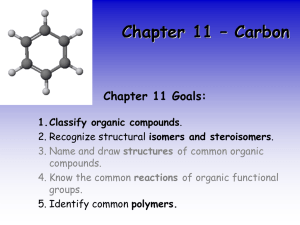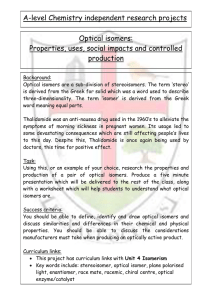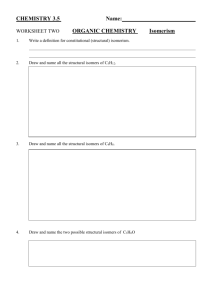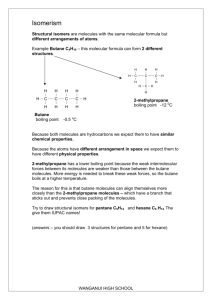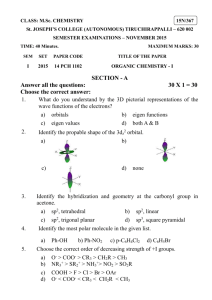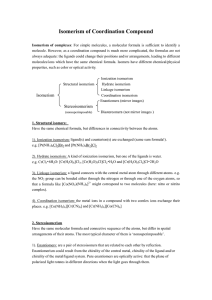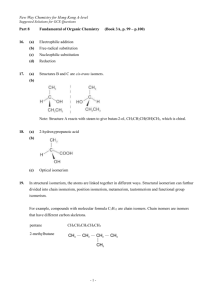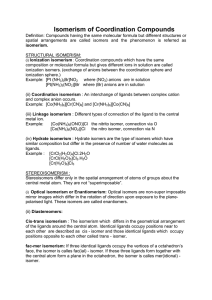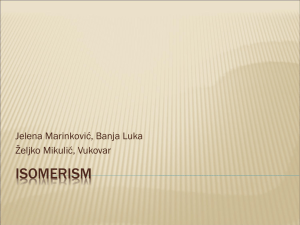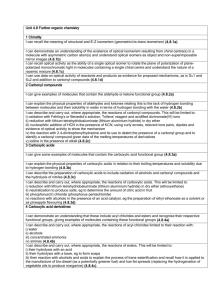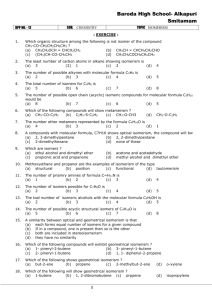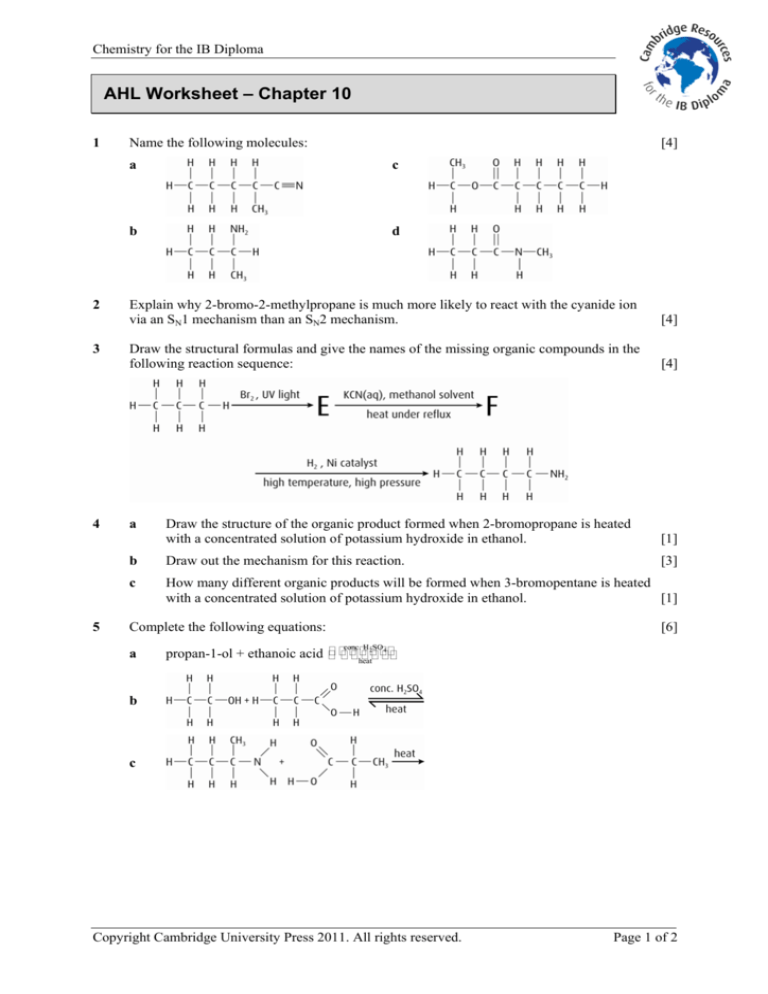
Chemistry for the IB Diploma
AHL Worksheet – Chapter 10
1
2
3
4
5
Name the following molecules:
[4]
a
c
b
d
Explain why 2-bromo-2-methylpropane is much more likely to react with the cyanide ion
via an SN1 mechanism than an SN2 mechanism.
[4]
Draw the structural formulas and give the names of the missing organic compounds in the
following reaction sequence:
[4]
a
Draw the structure of the organic product formed when 2-bromopropane is heated
with a concentrated solution of potassium hydroxide in ethanol.
[1]
b
Draw out the mechanism for this reaction.
[3]
c
How many different organic products will be formed when 3-bromopentane is heated
with a concentrated solution of potassium hydroxide in ethanol.
[1]
Complete the following equations:
a
[6]
conc. H 2SO 4
propan-1-ol + ethanoic acid heat
b
c
Copyright Cambridge University Press 2011. All rights reserved.
Page 1 of 2
Chemistry for the IB Diploma
6
a
b
Explain the differences between condensation polymerisation and addition
polymerisation.
[2]
Draw the repeat unit of the polymer formed when each of the following react:
[2]
i
ii
7
Draw out reaction sequences showing structural formulas and all reagents and conditions
for the following conversions:
a
1-chloroethane to propylamine (propan-1-amine)
b
ethanol to N-ethylethanamide
[8]
c
8
a
Select the molecules from the list below that will exhibit geometrical isomerism.
but-1-ene
but-2-ene
4-methylpent-2-ene
b
9
2-methylpropene
2-methylbut-2-ene
1,3-dichlorocyclobutane
1,1-dimethylcyclobutane
For those molecules in part a that exhibit geometrical isomerism, draw out and label
the cis/trans forms.
c
Draw and give the full names of all isomers of C5H10.
a
Select molecules from the following list that will exhibit optical isomerism.
butan-1-ol
propan-2-ol
butan-2-amine
butanone
b
[3]
[3]
[10]
[3]
pentan-2-ol
2-methylbutanenitrile
2-methylpropanoic acid
3-chloro-3-methylbutanal
For each of the molecules in part a that exhibits optical isomerism, draw out clear
three-dimensional diagrams showing the enantiomers. Mark chiral centres with a *.
[6]
c
Draw all the isomers of C5H12O that exhibit optical isomerism.
[3]
d
Explain how optical isomers may be distinguished from each other using
a polarimeter.
[3]
Copyright Cambridge University Press 2011. All rights reserved.
Page 2 of 2

